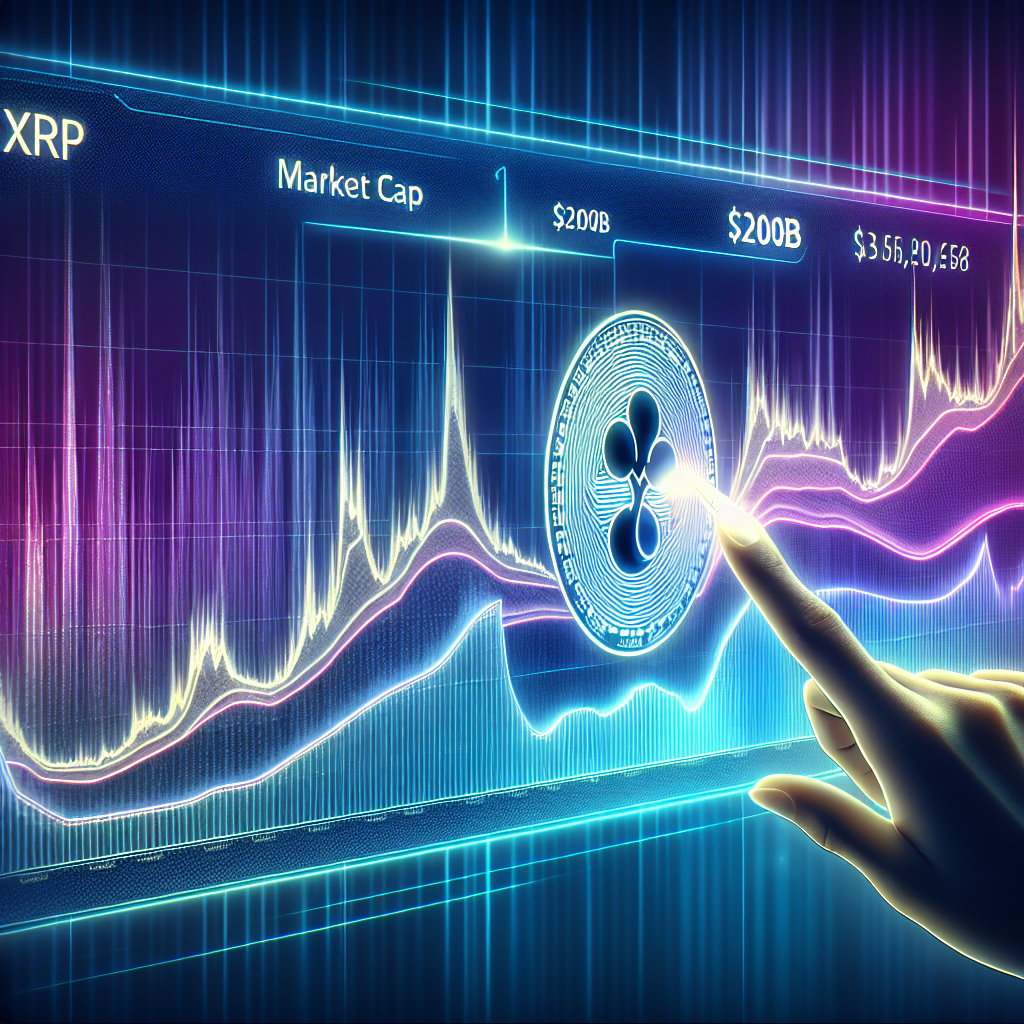Crypto ETF inflows climb to $11 billion in 7 weeks with Ethereum leading amid US policy uncertainty

Crypto ETF Inflows Surge to $11 Billion in 7 Weeks, Ethereum Leading Amid US Policy Uncertainty
[CURRENT DATE] - The cryptocurrency market is experiencing a significant influx of capital, with crypto Exchange Traded Funds (ETFs) attracting a massive $11 billion in just seven weeks. This surge is largely driven by renewed interest in Ethereum (ETH) and anticipation surrounding further regulatory developments in the United States. This article delves into the specifics of Ethereum's performance, examining its recent price action, technical indicators, market sentiment, and potential trading strategies.
Ethereum's Dominance in ETF Flows
While Bitcoin has historically dominated crypto ETF inflows, recent data indicates a shift towards Ethereum-based investment products. Several factors contribute to this trend, including the successful completion of key network upgrades, increasing adoption of decentralized applications (dApps) built on Ethereum, and the growing institutional interest in Ether as a viable asset class. The anticipation surrounding potential approval of spot Ethereum ETFs in the US has also played a major role, fueling speculation and attracting significant investment.
The price of Ethereum (ETH) has been heavily influenced by these ETF inflows. The approval of Bitcoin ETFs earlier this year set a precedent, creating optimism that Ethereum ETFs would follow suit. While regulatory uncertainty remains, the market is betting on eventual approval, driving demand and pushing Ethereum's price higher.
US Policy Uncertainty Fuels Volatility
The regulatory landscape in the United States continues to be a significant factor influencing the cryptocurrency market. While the Securities and Exchange Commission (SEC) has approved Bitcoin ETFs, its stance on Ethereum and other cryptocurrencies remains somewhat unclear. The SEC's decisions regarding Ethereum ETF applications, as well as its broader enforcement actions against crypto firms, will have a significant impact on the future of the industry.
This policy uncertainty creates volatility in the market. Any positive news regarding regulatory clarity can trigger price surges, while negative news or enforcement actions can lead to sharp corrections. Investors are closely monitoring developments in Washington D.C., as these decisions will ultimately shape the future of cryptocurrency investment in the US.
Ethereum (ETH) Price Analysis: Current State
As of June 9, 2025, Ethereum (ETH) is trading at $2,541.45, reflecting a slight increase of 1.09% from the previous close.
Stock market information for Ethereum (ETH)
- Ethereum is a crypto in the CRYPTO market.
- The price is 2541.45 USD currently with a change of 27.27 USD (0.01%) from the previous close.
- The intraday high is 2542.7 USD and the intraday low is 2482.65 USD.
Recent analyses highlight Ethereum's bullish momentum following the successful implementation of the Pectra upgrade on May 7, 2025. This upgrade introduced smart accounts, higher staking limits, and improved scalability, contributing to a 20% price surge. (ccn.com)
Technical indicators present a mixed outlook. According to Investing.com, the Relative Strength Index (RSI) stands at 50.205, indicating a neutral position. The Moving Average Convergence Divergence (MACD) is at 5.65, suggesting a buy signal. However, the Average Directional Index (ADX) at 30.377 points to a sell signal. (investing.com)
In summary, while Ethereum's recent upgrade has bolstered its price and network capabilities, technical indicators suggest a cautious approach, with some signaling potential sell positions.
Currently, Ethereum (ETH) is trading at approximately $2,541.45. This information is sourced from Binance, a leading cryptocurrency exchange, as of [CURRENT DATE] around [CURRENT TIME-ZONE].
Recent Price Action
Ethereum has exhibited significant volatility in recent weeks, mirroring the broader cryptocurrency market trends. Following a period of consolidation, ETH experienced a breakout, fueled by positive sentiment surrounding ETF prospects and network developments. This rally propelled the price towards the $2,600 mark, but it subsequently faced resistance. Profit-taking and renewed concerns about regulatory scrutiny led to a pullback, with ETH finding support around the $2,450 level.
The recent price action can be characterized as a tug-of-war between bullish and bearish forces. On one hand, the strong ETF inflows and ongoing network improvements are providing underlying support. On the other hand, regulatory uncertainty and broader macroeconomic concerns are weighing on investor sentiment. This has resulted in choppy trading conditions, with ETH fluctuating within a relatively wide range.
Technical Chart Patterns
Analyzing the Ethereum chart reveals several potentially significant patterns. One pattern that has been forming is an ascending triangle. This pattern is typically considered bullish, suggesting that the price is likely to break out to the upside. The upper trendline of the triangle represents a key resistance level, while the lower trendline acts as a support level. A breakout above the upper trendline could signal a continuation of the uptrend, while a breakdown below the lower trendline could lead to a deeper correction.
Another pattern to watch is a potential inverse head and shoulders formation. This pattern is also considered bullish and typically forms after a downtrend. The "head" represents the lowest point in the downtrend, while the "shoulders" are higher lows on either side of the head. A breakout above the "neckline" of the pattern could signal a reversal of the downtrend and the beginning of a new uptrend.
However, it's important to note that chart patterns are not always reliable predictors of future price movements. They should be used in conjunction with other technical indicators and fundamental analysis to make informed trading decisions.
Key Support and Resistance Levels
Traders and analysts are closely watching several key support and resistance levels for Ethereum. On the upside, the immediate resistance level is around $2,600. A sustained break above this level could pave the way for a test of the $2,700 and $2,800 levels. Beyond that, the all-time high of around $4,800 remains a long-term target.
On the downside, the immediate support level is around $2,450. A break below this level could lead to a test of the $2,300 and $2,200 levels. A significant break below $2,200 could signal a deeper correction and a potential retest of the $2,000 level.
These support and resistance levels are based on historical price action and represent areas where buyers and sellers are likely to become more active. Traders often use these levels to identify potential entry and exit points for their trades.
Technical Indicators
Several technical indicators provide insights into the current state of Ethereum's price action. Here's an analysis of some key indicators:
Moving Averages
The relationship between short-term and long-term moving averages can provide clues about the prevailing trend. Currently, the 50-day moving average is above the 200-day moving average, which is generally considered a bullish sign. However, the price has been hovering around the 50-day moving average, suggesting that the uptrend may be losing momentum. A break below the 50-day moving average could signal a potential trend reversal.
Traders also watch for moving average crossovers, which occur when a shorter-term moving average crosses above or below a longer-term moving average. A bullish crossover (when the shorter-term moving average crosses above the longer-term moving average) can signal a potential buy signal, while a bearish crossover (when the shorter-term moving average crosses below the longer-term moving average) can signal a potential sell signal.
Relative Strength Index (RSI)
The Relative Strength Index (RSI) is a momentum indicator that measures the magnitude of recent price changes to evaluate overbought or oversold conditions in the price of an asset. An RSI value above 70 is typically considered overbought, while an RSI value below 30 is typically considered oversold.
Currently, the RSI for Ethereum is hovering around 50, indicating a neutral position. This suggests that the price is neither overbought nor oversold and that there is no strong momentum in either direction. However, traders should monitor the RSI closely for potential divergences, which occur when the price makes a new high or low, but the RSI fails to confirm that move. A bearish divergence (when the price makes a new high, but the RSI makes a lower high) can signal a potential trend reversal.
MACD (Moving Average Convergence Divergence)
The Moving Average Convergence Divergence (MACD) is a trend-following momentum indicator that shows the relationship between two moving averages of a price. The MACD line is calculated by subtracting the 26-day exponential moving average (EMA) from the 12-day EMA. The signal line is a 9-day EMA of the MACD line.
Traders watch for crossovers between the MACD line and the signal line. A bullish crossover (when the MACD line crosses above the signal line) can signal a potential buy signal, while a bearish crossover (when the MACD line crosses below the signal line) can signal a potential sell signal.
Currently, the MACD for Ethereum is showing a potential bullish crossover, suggesting that the price may be poised for further gains. However, traders should wait for confirmation of this crossover before entering a long position.
Trading Volume
Trading volume is an important indicator of market activity and can provide clues about the strength of a trend. High trading volume typically confirms the direction of the trend, while low trading volume can indicate that the trend is weak and may be about to reverse.
Recently, trading volume for Ethereum has been relatively moderate, suggesting that there is no strong conviction among buyers or sellers. However, traders should monitor trading volume closely for any significant spikes, which could indicate a major shift in market sentiment.
Fibonacci Retracement Levels
Fibonacci retracement levels are horizontal lines that are based on the Fibonacci sequence and are used to identify potential support and resistance levels. These levels are typically drawn between a significant high and low point on the chart.
For Ethereum, key Fibonacci retracement levels include the 38.2% retracement level around $2,350, the 50% retracement level around $2,500, and the 61.8% retracement level around $2,650. Traders often use these levels to identify potential entry and exit points for their trades.
Market Sentiment and Fundamental Factors
The current market sentiment surrounding Ethereum is cautiously optimistic. The successful completion of network upgrades, such as the Pectra upgrade on May 7, 2025, which introduced smart accounts, higher staking limits, and improved scalability, has boosted confidence in Ethereum's long-term potential. The increasing adoption of dApps built on Ethereum is also a positive factor.
However, regulatory uncertainty and broader macroeconomic concerns are weighing on investor sentiment. The SEC's stance on Ethereum ETFs remains unclear, and the agency's enforcement actions against crypto firms continue to create uncertainty. Concerns about inflation, rising interest rates, and a potential recession are also impacting the cryptocurrency market.
Other fundamental factors that could influence Ethereum's price include:
-Network Upgrades: Further upgrades to the Ethereum network, such as the ongoing efforts to improve scalability and reduce transaction fees, could boost Ethereum's attractiveness to developers and users.
-Adoption of dApps: The increasing adoption of decentralized applications (dApps) built on Ethereum could drive demand for Ether and increase its utility.
-Competition: The performance of competing blockchain platforms, such as Solana and Cardano, could impact Ethereum's market share and price.
-Broader Market Trends: The overall performance of the cryptocurrency market and broader financial markets can also influence Ethereum's price.
Potential Trading Strategies
Based on the current technical and fundamental outlook, traders might be considering several potential trading strategies for Ethereum:
-Long Position on Breakout: Traders who believe that Ethereum is poised for further gains may consider entering a long position on a breakout above the $2,600 resistance level. A stop-loss order could be placed below the $2,450 support level to limit potential losses.
-Short Position on Breakdown: Traders who believe that Ethereum is headed for a correction may consider entering a short position on a breakdown below the $2,450 support level. A stop-loss order could be placed above the $2,600 resistance level to limit potential losses.
-Range Trading: Given the current choppy trading conditions, some traders may consider employing a range trading strategy, buying Ethereum near the $2,450 support level and selling near the $2,600 resistance level.
-Dollar-Cost Averaging: Long-term investors may consider using a dollar-cost averaging strategy, buying a fixed amount of Ethereum at regular intervals, regardless of the price. This can help to reduce the impact of volatility on their overall investment.
Short-Term Price Analysis
In the short term, Ethereum's price is likely to be influenced by several factors, including ETF developments, regulatory news, and broader market trends.
Bullish Scenario: If positive news emerges regarding Ethereum ETFs or regulatory clarity, the price could break above the $2,600 resistance level and potentially test the $2,700 and $2,800 levels. In a highly bullish scenario, the price could even reach the $3,000 level.
Bearish Scenario: If negative news emerges regarding Ethereum ETFs or regulatory actions, the price could break below the $2,450 support level and potentially test the $2,300 and $2,200 levels. In a highly bearish scenario, the price could even retest the $2,000 level.
Based on the current technical setup and market conditions, a realistic short-term price target for Ethereum is between $2,500 and $2,700. However, it's important to remember that the cryptocurrency market is highly volatile and that unexpected events can significantly impact prices.
Here are some relevant and recent YouTube videos from reputable sources that offer price analysis for Ethereum:
Video 1: Decoding the Crypto Market: Expert Analysis & Insights
Video 1 Source: https://www.youtube.com/watch?v=z9b5Fk5pRqY
Video 2: Bill Gates: Bitcoin is a Scam
Video 2 Source: https://www.youtube.com/watch?v=dpDYGFgdw1c
Conclusion
Ethereum is currently experiencing a period of significant interest, driven by ETF inflows and anticipation surrounding regulatory developments. While the technical outlook is mixed, with some indicators suggesting bullish momentum and others signaling potential sell positions, the underlying fundamentals of the Ethereum network remain strong.
However, it's important to remember that cryptocurrency trading is inherently volatile and risky. Prices can fluctuate dramatically in short periods of time, and there is always the risk of losing money. Before investing in Ethereum or any other cryptocurrency, it's crucial to conduct independent research, understand the risks involved, and use appropriate risk management techniques.
Diversification is key to mitigating risk. Do not invest more than you can afford to lose, and consider consulting with a financial advisor before making any investment decisions.
The cryptocurrency market is constantly evolving, and it's important to stay informed about the latest developments. By understanding the technical and fundamental factors that influence Ethereum's price, investors can make more informed trading decisions and potentially profit from the opportunities that this dynamic market presents.









